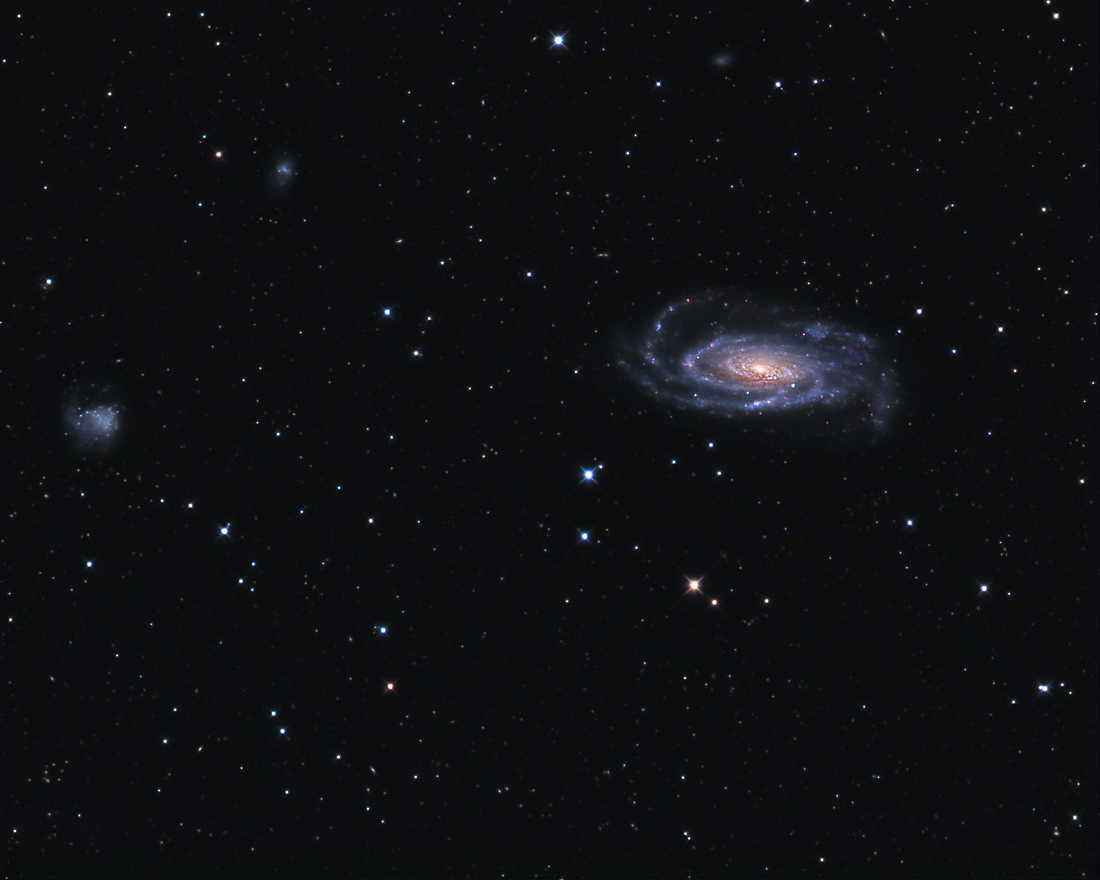Technical details:
Location / Date: Outside of Kopparberg, Västmanland, Sweden / 2018-April
Optics: Orion Optics UK AG12
Mount: 10 Micron GM1000 HPS (Unguided)
Camera: Atik One 6.0 with Astrodon 1,25" L-RGB Gen 2 E-Series Filterset
Exposure:
L: 56 x 240s bin1x1,
R:23 x 150s bin2x2,
G:21 x 150s bin2x2,
B:18 x 150s bin2x2
(cumulative exposure time is 6 hours and 19 minutes)
Processing: Pixinsight and Photoshop
Image details:
NGC 5033 is an inclined spiral galaxy located in the constellation Canes Venatici. Distance estimates vary from between 38 and 60 million light years from the Milky Way Galaxy.
The galaxy has a very bright nucleus and a relatively faint disk. Significant warping is visible in the southern half of the disk.
NGC 5033 contains a Seyfert nucleus.
Like many other active galactic nuclei, this galaxy's nucleus is thought to contain a supermassive black hole.
The bright emission seen in visible light (as well as other wavebands) is partially produced by the hot gas in the environment around this black hole.
Integral field spectroscopic observations of the center of NGC 5033 indicate that the Seyfert nucleus is not located at the kinematic center of the galaxy
(the point around which the stars in the galaxies rotate). This has been interpreted as evidence that this galaxy has undergone a merger.
The displacement of the Seyfert nucleus from the kinematic center may destabilize the rotation of gas in the center of the galaxy, which could cause gas to fall into the nucleus.
The gas would be compressed by the enormous gravitational forces in the center of the Seyfert nucleus and become hot, thus making the nucleus appear bright or "active". (Information from Wikipedia)





